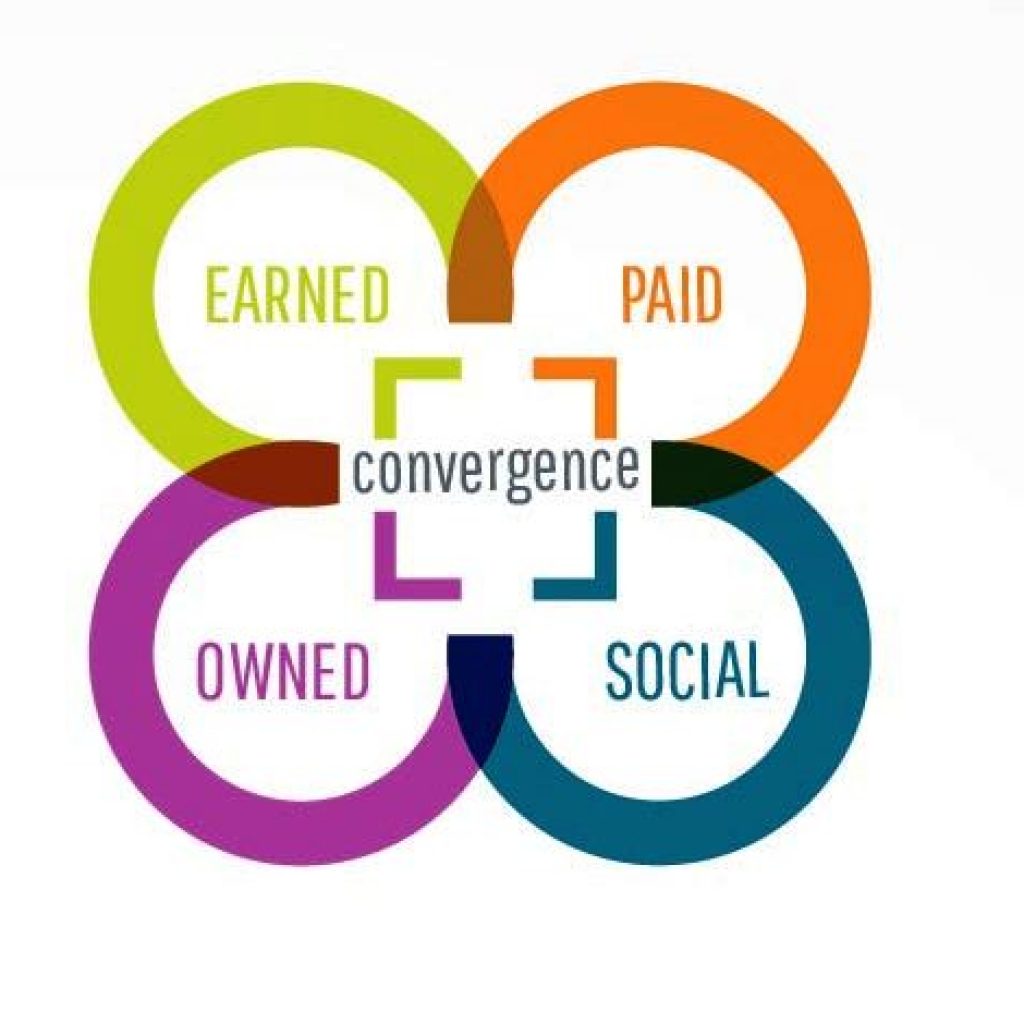Digital marketing campaigns are like juggling. You manage several important elements that are all connected to each other. If you take your eyes off one element and it drops to the ground, there is a good chance the other balls are going to follow. Digital marketing campaigns connect with audiences at several different points in their customer journey. Broadly these points represent spheres of influence which each contain several different, overlapping channels. The spheres include:

Paid – This sphere of influence represents the areas where you budget and spend money (i.e. PAID) to move audiences towards desired perceptions and the actions that are related to them.
Earned – This sphere of influence is where you build trust with your audiences by sharing relevant content, having positive reviews from third parties and partnerships that enhance your standing.
Social – Customers and others are talking about your company, products and services. What they share has significant impact on your target audiences and their actions.
Owned – These are the spheres that you create and manage. They range from real-world items such as catalogs to your web site, newsletters and social channels.
The graphic illustrates an important concept… there is considerable overlap. Just because you “own” your Facebook Business Pages does not mean that input from influencers will not have an impact. Likewise, a positive (or negative) third party review can instantly change the dynamics of paid advertising.
In less than 60 seconds a prospect or customer may journey to five different platforms, checking out a headline for a review, a Facebook post, an email from a friend, over to a Twitter notation, then to a Google search. Movement happens rapidly, not sequentially. In order to take advantage of the “chaos of digital trekking” you need to have appropriate touch points ready in every channel.
As you assemble your campaign puzzle it is a good idea to return again-and-again to your audiences. Know their core values; understand how they view the world and recognize their unique use of language.
If you have a product or a service that you are promoting across multiple audiences it is critical that you continue to have the same message. Focus your message and be consistent with your messaging. And, here’s the key, use appropriate channels and language to connect with each audience. This is where a lot of marketing professionals fail. They create one slogan or ad and use it everywhere. This may be less expensive, but it is a lot less effective.
The Channels of Connection
Remember we are living in the world of omni-channel marketing. You need to identify all of the audience touch points… as well as the circuit of interactions that move your audience from one channel to another. This is important and you should take your time with it. There are lots of channels available and you probably have a limited budget. You may end up with some major channels and some test channels.
One thing we’ve learned is that audiences generally don’t like to move from one platform to another while they are engaged. While there are clear benefits of getting people to your web site and landing page; it doesn’t help if they are unhappy that they land there and have to backtrack to get back to their business of sharing with friends.
One solution is to engage audiences on a social network and have them complete the action of your ad or call to action within the network. It is seamless and you get a better conversion. Most social networks realize the advantage of staying in network also. That’s why there are many opportunities to promote coupons, offers, sign ups, content engagement and other actions within network.

